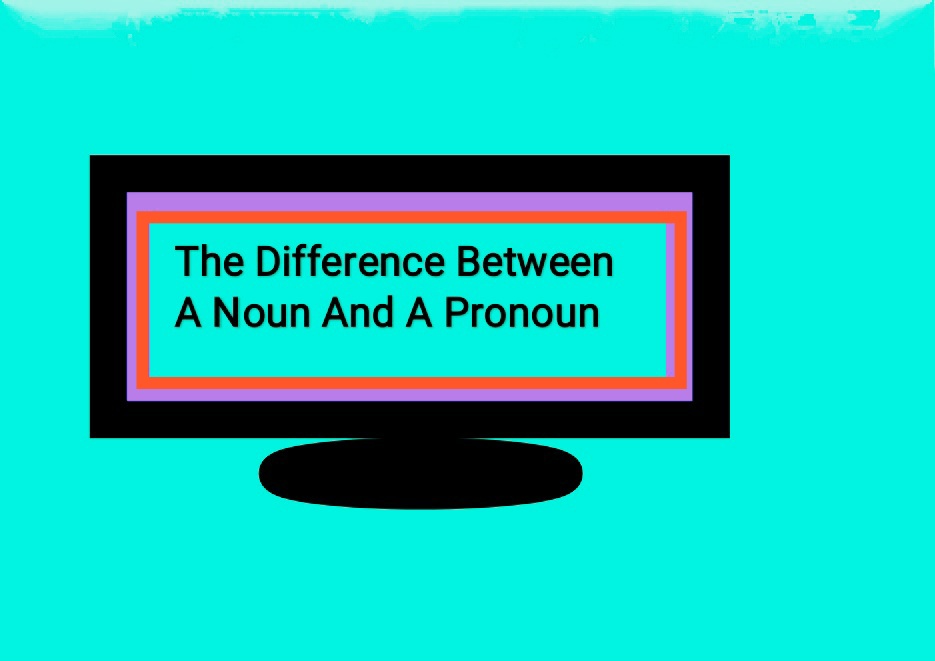The Difference Between A Noun And A Pronoun

What Is A Noun?
According to the Oxford Dictionary a noun is "a word (other than a pronoun) used to identify any class of people, place, or thing (common noun) or to designate a particular name (proper noun) among them." Simply put, a noun is a word used to name a person, place or thing.This noun has three (3) cases. They are nominative, possessive, and objective. The nominative case deals with the subject whereas the objective or accusative case deals with the object. Nouns look similar when they are used in the nominative and objective cases.
- Robert ate an orange.
Here the word an orange is used in the nominative case. So, the forms look similar.
Nouns are divided into different types. They include proper nouns, plural nouns, count nouns, non-count nouns, collective nouns and compound nouns. New York is a proper noun, chair is a count noun, a herd is a collective noun, knifes is a plural noun, and whiteboard is a compound noun.
An orange falls from the tree.
What Are The 10 Different Types of Nouns?
- Common nouns (e.g., house, cat, girl, foot, country)
- Proper nouns (e.g., Spain, Fido, Sony)
- Singular nouns (e.g., house, cat, girl, foot, country)
- Plural nouns (e.g., houses, cats, girls, countries)
- Concrete nouns (e.g., table, apple, rabbit, ear)
- Abstract nouns (e.g., love, creativity, democracy)
- Collective nouns (e.g., crowd, flocks, committee, a sum of money)
- Compound nouns (e.g., dry-cleaning, jack-in-the-box, toothpaste, haircut, output, ice cream, potato chip)
- Countable nouns (e.g., table, apple, rabbit, ear)
- Uncountable nouns (e.g., salt, seafood, luggage, advice)
What Are Examples of Nouns?
- Smith is a wonderful player.
- S.Lions is the team he plays for.
- She was not born in this country.
- Alex is the city he lives in.
- She is a woman of dream.
- The chair is made of wood from a tree.
- My sister has a mobile phone.
- The phone is made of plastic.
- I need some milk for the cake.
- The bag is on the table.
- It also has a pen and a diary.
- Honesty is a quality that is rare nowadays.
- Integrity basically depends on truthfulness and honesty.
- The cat ate a cookie every day.
- I have a phone, few books, a dairy, a table-calendar, and a laptop on my desk.
What Is A Pronoun?
The Oxford Dictionary definition for a pronoun is as follows: “A word that can function as a noun phrase used by itself and that refers either to participants in speech (eg I, you) or to someone or something referred to elsewhere in speech (eg he, it, this) .” Simply put, a pronoun is a word that can be used as a substitute for a noun. Under pronouns there are different types of pronouns such as personal pronouns, interrogative pronouns, relative pronouns and indefinite pronouns. Out of them, personal pronouns are the most commonly used. Some examples for personal pronouns are I, we, you, and they.Pronouns look different when they are used in the nominative, and objective cases. Look at the example below.
- I read a fun book.
- He beat me a lot.
Here, the personal pronoun 'me' is used in the objective case. You will find that the personal pronoun I has changed to me when used in the objective case. So, the two forms look different.
On the other hand, pronouns are divided into demonstrative pronouns, relative pronouns, reflexive pronouns, reciprocal pronouns, interrogative pronouns, and indefinite pronouns. This and that are demonstrative pronouns, who is a relative pronoun, which is an interrogative pronoun, myself is a reflexive pronoun, each other is a reciprocal pronoun, and someone is an indefinite pronoun.
What Are the 9 Different Types of Pronouns?
- Personal pronouns (e.g., he, they, we)
- Demonstrative pronouns (e.g., this, that, these)
- Interrogative pronouns (e.g., which, who, whose)
- Possessive pronouns (e.g., his, yours, ours)
- Reciprocal pronouns (e.g., each other, one another)
- Relative pronouns (e.g., which, who, that)
- Indefinite pronouns (e.g., none, several, any)
- Reflexive pronouns (e.g., itself, himself, ourselves)
- Intensive pronouns (e.g., itself, himself, ourselves)
What Are Examples of Pronouns?
- They play football together.
- I have some money than he.
- If you don't hurry we will be late.
- I prefer this very much.
- These are beautiful, but those belong to Smith.
- Have you see that?
- Who will come to the night party?
- Which one does he prefer?
- What do you need now?
- Whose clothes are lying on the floor?
- Whom did you tell?
- Are these pineapples yours?
- This house is ours.
- Is the fault yours or theirs?
- This dog is mine.
-
Boxers punched each other.
- The couple loves one another deeply.
- Smith and Paul had baked themselves cakes.
- Alex only had herself to blame.
- This table, which sits in the hallway, is used for correspondence.
- The bike that crashed into the wall was red.
- This is the man, whose key you found.
- I will do this myself.
- We made this pillar ourselves.
- A nation speaks for itself through elections.
- Does anyone want to eat chocolate?
- Take whatever you like.














No comments:
Post a Comment